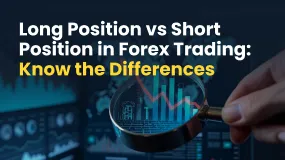Week 42 data: EURUSD and gold
Abstract:This preview of weekly data looks at EURUSD and XAUUSD, where economic data coming up later this week are the main drivers in the markets for the near-term outlook. The most important economic data for this week are

This preview of weekly data looks at EURUSD and XAUUSD, where economic data coming up later this week are the main drivers in the markets for the near-term outlook. The most important economic data for this week are:
RBA meeting minutes on Tuesday at 12:30 AM GMT. Market participants will be monitoring this publication in an effort to get some hints on the stance of the RBA regarding monetary policy. Hawkish comments might support the Aussie Dollar, while dovish news might lead to minor losses.
British unemployment on Tuesday at 06:00 AM GMT. The consensus for the month of August is that the figure will remain stable at 4.3%, while claimants for September are expected to rise to 22,000.
Canadian inflation rate on Tuesday at 12:30 PM GMT, where the market expects the figure for the month of September to remain steady at 4%.
Chinese GDP on Wednesday at 02:00 AM GMT for the third quarter of the year is expected to decline to 4.4% against the previous reading of 6.3%. On the same day, there is also the publication of industrial production from China for the month of September, where the market is expecting a decline of 0.2%, reaching 4.3%. If this is broadly accurate, we might see some decline in the production of metals like silver and copper.
British inflation rate on Wednesday at 06:00 AM GMT. The expectations for the month of September are for a further decline of around 0.2%. This might lead to minor losses in the pound since it could influence a more dovish stance in the next meeting of the Bank of England.
European inflation rate on Wednesday at 09:00 AM GMT. The consensus is for a decline in the figure of around 0.8%, reaching 4.3% for the month of September. If the consensus is confirmed, we might see some short-term losses for the Euro against its pairs, at least in the short term.
Fed Chair J. Powell's speech on Thursday at 04:00 PM GMT. As the head of the Fed, which controls short-term interest rates, he has more influence over the US dollar's value than any other person. Traders closely watch his speeches as they are often used to drop hints regarding future monetary policy.
EURUSD, daily
US dollar regained the losses incurred on the Dollar Index (DXY) in the previous week, supporting it against other major currencies like Euro and British pound. The dollar remains strong as conflict in the Middle East bolsters demand for the safe-haven currency.
Market participants are also awaiting the speech by Federal Reserve Chair Jerome Powell later this week for clues on the US interest rate outlook as well as the inflation rate from Europe, in order to better understand the short-term outlook on the EURUSD pair.
According to the Fedwatch Tool of CME, the probabilities of a rate hike in interest rates at the next meeting, on the 1st of November, are kept below 10% at the time of this report being written, and 90% are in favor of keeping the rates at their current level of 5.25%-5.50%.

On the technical side, the price has encountered sufficient resistance at 23.6% of the daily Fibonacci retracement level and has since corrected to the downside. Currently, it is trading just above the inside support level of $1.04500, which is an area of price reaction since late December of last year, and this also includes the lower Bollinger band.
The 50-day moving average is still trading below the 100-day moving average, validating the overall bearish momentum in the market, while the Stochastic oscillator is not showing any overbought or oversold levels.
Gold-dollar, daily
Gold prices fell on Monday due to technical selling following a strong rally in the previous session. The overall surge in prices was driven by the Israel-Hamas conflict, which prompted investors to seek the safe-haven asset and kept bullion above $1,900 per ounce. Investors are searching for stable investment opportunities during this uncertain period, and gold has met these expectations. The upcoming speech by Federal Reserve Chair Jerome Powell will be closely watched for more clarity on the US interest rate path.

From a technical point of view, gold prices have managed to recover almost 100% of the aggressive decline witnessed in late September and are currently testing the support of the 100-day moving average.
In the current session, the price has also tested the support of 61.8% of the weekly Fibonacci, which seems to be holding for the time being. The area of $1,900 appears to be the major technical support area on the chart since it comprises the psychological support of the round number, the 61.8% of the weekly Fibonacci retracement level, and also the 'dynamic area' between the 50 and 100-day moving averages.
Conversely, the Stochastic oscillator is recording extreme overbought levels, indicating that a correction to the downside in the near short-term outlook is possible before any continuation to the upside.

Read more

Long Position vs Short Position in Forex Trading: Know the Differences
When investing through forex, you often come across terms such as long position and short position. You may wonder what these two mean and how they impact your trading experience. So, the key lies in understanding the very crux of this forex trading aspect, as one wrong step can put you behind in your trading journey. Keeping these things in mind, we have prepared a guide to long position vs short position forex trading. Keep reading!

FONDEX Review: Do Traders Really Face Inflated Spreads & Withdrawal Issues?
Does FONDEX charge you spreads more than advertised to cause you trading losses? Does this situation exist even when opening a forex position? Do you witness customer support issues regarding deposits and withdrawals at FONDEX broker? Does the customer support official fail to explain to you the reason behind your fund loss? In this article, we have shared FONDEX trading complaints. Read on!

Top Tips to Avoid Forex Margin Calls and Protect Your Capital
While technical indicators or chart patterns often capture the attention of forex traders, especially new ones, aspects such as margin requirements, equity, used margin, free margin, and margin levels are often overlooked. So, if you have received a margin call from your forex broker and are wondering how to deal with it, you probably do not know the concept of a forex margin call - what triggers it and how to avoid it. Being unaware of this concept can make you lose your hard-earned capital. In this article, we will provide you with all the information you need to know. Keep reading!

Voices of the Golden Insight Award Jury | Peter Karsten, CEO STARTRADER
WikiFX Golden Insight Award uniting industry forces to build a safe and healthy forex ecosystem, driving industry innovation and sustainable development, launches a new feature series — “Voices of the Golden Insight Awards Jury.” Through in-depth conversations with distinguished judges, this series explores the evolving landscape of the forex industry and the shared mission to promote innovation, ethics, and sustainability.
WikiFX Broker
Latest News
Titan Capital Markets: The "Token" Trap Hiding Behind a Forex Mask
Stop Trading: Why "Busy" Traders Bleed Their Accounts Dry
Stop Chasing Green Arrows: Why High Win Rate Strategies Are Bankrupting You
Should You Delete Every Indicator from Your Charts? Let’s Talk Real Trading
Is ZarVista Legit? A Critical Review of Its Licenses and Red Flags
The Copycat Trap: Why You Lose Money Using a "Winning" Strategy
【Inside the Elite Committee】Talk with Mohamed Lewaa
FIBOGROUP Investigation: When Revoked Licenses Meet Malicious Liquidation
Rate Calc


